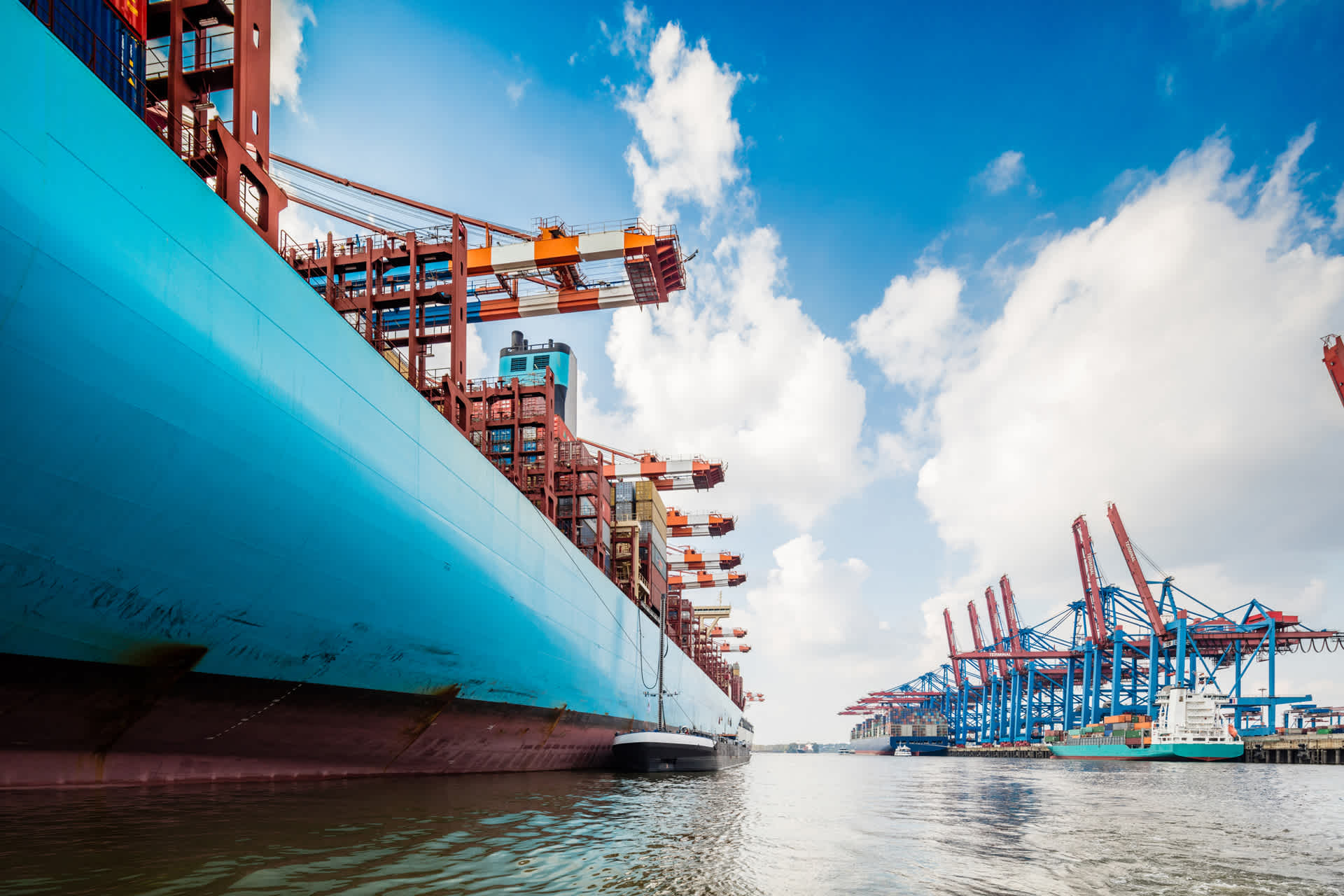Global Logistics Update
Freight Market Update: May 17, 2022
Ocean and air freight rates and trends; customs and trade industry news plus Covid-19 impacts for the week of November 16, 2021.
Freight Market Update: May 17, 2022
European Freight Market Update Live | Tue, May 17 @ 16:00 CEST / 15:00 BST
North America Freight Market Update Live | Thurs, May 19 @ 8:30 am PT / 11:30 am ET
Ocean Freight Market Update
Asia → North America (TPEB)
- Uncertainty around the timeline for Shanghai reopening and ILWU negotiations further muddy the Transpacific Eastbound (TPEB) market outlook. Restrictions continue to be in place due to Covid-19 outbreaks in the major manufacturing region around Shanghai. Long-anticipated International Longshore and Warehouse Union (ILWU) and Pacific Maritime Association (PMA) labor negotiations are now underway as stakeholders of every kind anxiously await news of agreements being reached. As the traditional peak season approaches, demand remains soft overall in the current TPEB market. For cargo ready now, importers might consider taking advantage of currently available space and softer floating market rates.
- Rates: Levels remain elevated relative to the pre-Covid market with softening in many major pockets, especially into U.S. west coast (USWC) ports.
- Space: Mostly open, except in pockets.
- Capacity/Equipment: Open, except in pockets.
- Recommendation: Book at least 2-4 weeks prior to cargo ready date (CRD). Consider premium options where needed. Be flexible in regard to equipment and routings. Check closely with suppliers to understand any Covid-related impacts or changes to production outputs and forecasts.
Europe → North America (TAWB)
- Congestion is still improving at USWC ports with vessel waiting time down to 10-17 days. The U.S. east coast (USEC), especially Charleston, has shown some signs of improvement with delays of 1-4 days. Houston is still the worst-performing with delays of up to 8 days.
- Rates: A strong trend remains in place as demand continues to outpace capacity. Expect this trend to continue for the next several months.
- Space: Critical for both USEC and USWC due to ongoing (improved) congestion and continuing strong demand. Some ad hoc space is opening for USWC on specific services.
- Capacity/Equipment: Capacity remains tight for both North Europe and Mediterranean services. Better equipment availability at port. Shortages remain at inland depots.
- Recommendation: Book 5 or more weeks prior to CRD. Request premium service for higher reliability and no-roll.
Indian Subcontinent → North America
- ISC Exports normalizing with exception to transhipments in Colombo as Sri Lanka continues to face social and economic pressures. Colombo port is operational, but delays and increased roll-over risk should be expected.
- Rates: Rates remain at elevated levels for May.
- Space: A temporary softening of demand is being experienced on major port pairings to the USEC and USWC. This softening is not expected to last as we near the reopening of major Chinese ports with an associated uptick in volume being sent to ports such as Los Angeles/Long Beach (LA/LB) and Oakland.
- Equipment: Equipment deficits are being reported across many ports in India. Most affected are the S/SE ports, Kolkata, and Inland container depots (ICDs) in North India.
- Recommendation: Load via wet port and avoid Inland container depots when possible. ICDs are a chokepoint for containers which often leads to delays in shipping order release.
North America → Asia
- Vessel arrivals and available capacity remain fluid for all USWC ports. More blank sailings due to the vessel backlog in Shanghai can be expected. The USEC continues to see challenges with vessel congestion and some vessel strings omitting Charleston and Savannah entirely. Erratic vessel schedules continue to cause significant challenges with posted earliest return dates and vessel cut-offs at the port.
- Rates: Limited general rate increase (GRI) activity announced for May, no announcements have been made for June.
- Capacity/Equipment: Deficits on containers and chassis continue to plague Inland Port Intermodal (IPI) origins. Availability for standard equipment at ports has not been an issue for most ports but carriers have advised of continuing shortages on 40s at the port of Oakland.
- Recommendation: Please place bookings 4 weeks prior to vessel Estimated Time of Departure (ETD).
North America → Europe
- Significant congestion and vessel delays in Europe remain in addition to the ongoing schedule issues for New York, Charleston, and Savannah. The port of Houston is also experiencing capacity constraints due to schedule delays and port congestion with one service being reduced from weekly to biweekly. US West Coast service to Europe is extremely tight due to void sailings and skipped ports caused by systematic delays. Pacific Northwest coverage for Europe is suspended indefinitely. US West Coast coverage for Mediterranean ports will see capacity reduced with one of the ocean carriers phasing out their service.
All carriers have issued a booking stop for shipments to Ukraine, Russia, and Belarus. - Rates: No GRI announced for May or June.
- Capacity/Equipment: Deficits are still plaguing IPI origins. Availability for standard equipment at ports has not been an issue, but special equipment is hard to come by.
- Recommendation: Please place bookings 3 to 4 weeks in advance for East Coast/Gulf sailings and 6 weeks for Pacific Coast sailings.
North America Vessel Dwell Times

Air Freight Market Update
Asia
- N. China: With Covid cases dropping significantly the Shanghai government hopes to reopen the city on June 1. Local stores have also begun opening gradually with limited capacity and restrictions. Factory production and trucking capacity are improving and rates have increased slightly compared to the prior week.
- S. China: Ex-South China the market remains slow after the long holiday and rates are similar to last week. As north China continues to face lockdown measures, we anticipate more cargo to re-route through South China.
- Taiwan: Despite Covid cases increasing daily the market is stable and operations are normal. Some factories are experiencing a lack of raw materials which is affecting volume output. Airlines also continue to cancel flights on an ad-hoc basis for aircraft maintenance.
- Korea: The market is weak after the long holidays and is expected to remain quiet for the remainder of the week.
- SE Asia: The markets ex-Thailand and Malaysia are soft as the market continues to recover after the long holiday. Demand ex-Vietnam continues to be weak with TPEB rates decreasing this week and FEWB rates fairly stable, however, we anticipate strong demand at the end of the month.
Europe
- Demand is still strong but expected to remain stable in the upcoming slack summer season. Additional passenger capacity has created a surplus of cargo capacity.
- Rates are starting to decrease on transatlantic (TA) lanes. Jet fuel pricing is also starting to decrease, however, slight fuel uncertainty persists.
- Freighter capacity is improving with better rates and lead time, booking to uplift window is approx 8-12 days.
- Build pallets below 160CM increase the possibilities of better uplift and rates based on passenger capacity
- Deferred routings via secondary hubs are still providing cheaper rates overall.
- Dover crossing congestion is improving, however still quite unstable overall. Advice to uplift direct into the UK instead of using EU hubs for the rest of May
- For all trade lanes, continue to place bookings early to secure best uplift options/routings.
Americas
- Demand remains high, especially into Europe. Capacity remains manageable.
- Origin dwell times of 3 days have been reported in some cases.
- Capacity is slowly opening back into Shanghai Pudong (PVG) but under express rates in most cases.
- Early bookings are highly recommended.
- Los Angeles, Chicago, and New York (LAX/ORD/JFK) ground-handlers are dealing with high volume considering the heavy export throughput.
- Rates into LATAM and Asia are increasing while rates into Europe have slightly decreased due to the additional belly capacity added into the Transatlantic lane.
Trucking & Intermodal
Asia
- Trucking operations in China are gradually recovering: Trucking capacity is continuously improving with the Ministry of Transport of the People's Republic of China’s various actions. Highways are all open for trucking arrangements. Efficiency might be impacted due to local regulations to screen, monitor, and approve operations.
- Rates: Market rates are still high due to COVID prevention restrictions in each different city. Especially in East China, transportation permits to Shanghai are still limited.
- Capacity: In regions with areas of high risk (Jilin, Beijing, Shanghai, etc.) capacity is still limited.
Americas
- US Import/Export Trucking
- Market Trends
- Trucking capacity in major N. American markets is starting to open up as import volumes decrease across the country. The lockdowns we have seen over the past weeks across major China cities like Shanghai, Guangzhou, and Beijing, will reduce even more the inbound volume US ports receive in May.
- Inland markets' trucking capacity also remains high, driven by the lack of offered IPI bookings.
- The cartage market is beginning to soften due to the air market, and carriers are seeking volume. This softening is providing Flexport trucking an opportunity to evaluate the carriers in each market and start strategically allocating volume to carriers. The goal is to have specific partners assigned to different aspects of cartage in preparation for peak. Rather than having one carrier handle all cartage in a market, we will specify partners for airline transfers (intact vs loose) and for local pickups and deliveries.
- Market Trends
- US Domestic Trucking
- FTL Demand continues to soften due to stocked inventories, consumer spending slowdown, recent inflation, and global conflict. Tender volumes are down 20%+ YoY in April and the market has shifted in favor of the shippers.
- Tender rejection rates have fallen to 10.43%. This reflects a 50% decrease since early March and a 60% decrease YoY.
- After peaking in early March, Diesel prices remain at record highs hovering over $5/gallon. Fuel continues to be a much more taxing operating expense for fleets both on loaded and empty miles.
- Spot market rates have plummeted by as much as 20-25% YTD, whereas Contract rates remain steady with moderate increases. The spot market acts as a leading indicator for where rates are headed due to the transactional nature, while contract rates are not as fluid since they’re tied to longer-term agreements.
- Forecasting freight demand remains a challenge as COVID shutdowns in China and the war in Ukraine both present unknown risks to future availability and demand for certain commodities or materials.
Customs and Compliance News
Senator Will Introduce Bill to Waive Tariffs on Imported Infant Formula
Senator Mike Lee (R-UT) plans to introduce a bill to temporarily rescind tariffs for six months on infant formula from certain countries. The bill would also waive FDA labeling and nutrition requirements for formula from countries with similar approval standards as the U.S. and prohibit the FDA from recalling infant formula if labeling is the only reason for the recall.
President Biden Nominates New Agriculture Trade Official
President Joe Biden will nominate Alexis Taylor, the director of the Oregon Department of Agriculture, to be U.S. Department of Agriculture (USDA) Undersecretary for Trade and Foreign Agricultural Affairs. Taylor previously ran the USDA’s Farm Service and Foreign Agricultural Service agencies. She has received praise from politicians of both parties.
Factory Output news
- Mainland China: Production Resumes and trade between China and Southeast Asia begins to increase. Source
- Vietnam: Pandora invests $100m to build a new manufacturing facility in Vietnam. Source
- Cambodia: $1.3b financing support provided in the implementation of Cambodia’s Industrial Development Policy (IDP). Source
- Thailand: eBay plans for greater investment in Thailand to tap into export potential. Source
- India: Exports of wheat banned as a heatwave hit production causing prices to surge. Source
- India: Ford has abandoned its plans to manufacture electric vehicles in their India plant while exploring alternatives for their Indian manufacturing facilities. Source
- Sri Lanka: Pharmaceutical exporters hit hard with unsold goods as inventories of medicines and other packages remain idle. Source
- Pakistan: Karachi sees its first export of motor vehicles under the new Auto Industry Development and Export policy. Source
Freight Market News
High Fuel Prices Could Push Owner-Operators Out of Trucking
FreightWaves has reported that the increase in fuel prices and decline in spot market rates have created a huge financial burden for the 350,000 registered owner-operators. With this recent challenge exacerbated by flattening demand, it’s expected that many will move to sell their trucks as the protection of company driving becomes increasingly more appealing.
US Container Imports Up 7% in April
As the Covid lockdown in Shanghai approaches seven weeks and has prompted an increase in blank sailings, The Loadstar has reported US West Coast ports are experiencing a lull in May import volumes, despite an increase in container imports in the month of April. Furthermore, in anticipation of the west coast labor agreement set for July 1st, shippers are increasingly opting for the east coast ports over the west coast.
Flexport Research Updates
Post-Covid Indicator
Flexport’s Post-Covid Indicator measures the balance between U.S. consumers’ spending on goods versus services. Our latest update sees the potential for consumers’ preferences for goods declining back to summer 2020 levels over the next three months. The main driver is a downturn in nondurables preferences adjusted for inflation, which may be near pre-pandemic levels by the end of Q2.
Trade Activity Forecast
Flexport’s Trade Activity Forecast augments traditional economic techniques for predicting U.S. merchandise imports with Flexport’s proprietary data. In the latest update, we find that commodity price inflation will likely drive the dollar value of imports to new record highs throughout Q2.
Weekly Economic Report: Alarm Bell Rings
Flexport has been tracking and forecasting U.S. consumers’ heightened preference for goods over services throughout the pandemic. Our indicator was designed to signal when there were signs of consumer behavior returning to pre-Covid norms. That signal just went off.
Air Timeliness Indicator
The Air Timeliness Indicator measures the amount of time taken to move airfreight along two major trade lanes from the point of consolidation to arrival at final destination. The latest indicator saw a slight decrease for the Transpacific Eastbound lane (TPEB) at 11.4 days in the four weeks leading to May 1. For the Far-East Westbound lane (FEWB), delays once again beat their highest level since the end of February, hitting 10.8 days. Air times may reflect seasonal shifts working their way out of the system as importers switch to summer goods.
Ocean Timeliness Indicator
The Ocean Timeliness Indicator similarly measures transit time for ocean freight along the same two trade lanes. In the past week, TPEB increased to 104 days stopping the decline of the metric but remaining near November levels. The FEWB saw a much more significant increase, increasing by 3 days to 108 and showing that seasonal effects from the Lunar New Year Holidays have passed.
Freight Market Update is a complimentary service from Flexport, the modern freight forwarder. If you're not already a subscriber, we invite you to subscribe here.
Please note that the information in our publications is compiled from a variety of sources based on the information we have to date. This information is provided to our community for informational purposes only, and we do not accept any liability or responsibility for reliance on the information contained herein.


